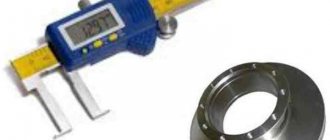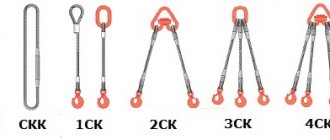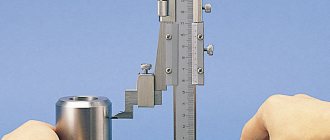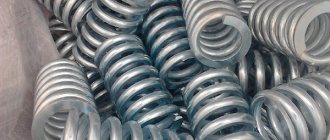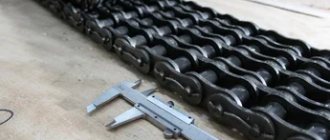Today, a paper clip seems like an everyday item; it is no longer possible to imagine life without it. It was as if she was always present and helped office workers deal with piles of papers lying in disarray.
However, a little more than a hundred years ago, no one had yet suspected the possibility of fastening sheets so easily and gracefully.
Today, a paper clip is used not only for its intended purpose, but also as a screwdriver, master key, toothpick, etc.
Let's take a closer look at the unusual history of the evolution of paper clips and find out the name of the creator of this useful invention.
What happened before paper clips?
Over the course of many decades, in connection with the successful development of paper bureaucracy, an urgent need arose to create a device capable of holding stacks of papers in one bundle without damaging them.
For several centuries, papers have been tied with ribbons , mercilessly punching holes where they are not needed.
Later, when safety pins , they tried to expand their functionality by moving them from sewing workshops to the office.
Photo of the safety pin:
The pins actively resisted - they did not want to pierce the paper (except together with the fingers) or quickly broke.
There were attempts to use spring wires , which were actually created for completely different purposes, but they did not catch on.
Years passed, but the necessary and convenient method did not appear.
Stationery staples. Parsing.
We are surrounded by staples, they are used to fasten a cash receipt and a sales receipt written by hand, a stack of bills for an apartment, a candidate’s resume of a couple of sheets. Staples all around. It really infuriates me when you try to punch three pieces of paper and the staples get stuck inside the stapler or bend on the paper. Let's figure out why this happens.
A few reasons:
- The stapler is faulty. For example, the output hole of the staple head is deformed, then the staples get stuck inside.
- The stapler contains the wrong size staples. The secret is in the same staple head - it is calibrated for a specific size. If there are smaller staples, they will fly through several pieces and get wrinkled inside. If more, they will get stuck at the exit. Although, there is always another option. If you are very strong, the staples will not get stuck, but the exit hole will break.
- You are trying to punch through more sheets than the stapler and staples are designed to handle.
- You bought cheap staples. A low price does not appear out of the blue. This means that the manufacturer saved at some stage of production.
In this article I won’t focus on staplers (we’ll get to them later), but on staples. Let's take a closer look at where and what we were missing, how to get honestly working staples and what to look for when purchasing.
In the photo: above, this is what the packaging and contents look like when the manufacturer saves on everything.
In the lower part, staples with different coatings: painted, uncoated, copper-plated and galvanized. Raw materials for staples:
The production of staples is a simple process of cutting and bending. In a good way, they are made from uncut metal wire. This means that it is the same diameter along its entire length and all staples in the block will be even. However, the price will drop significantly if the wire is made of aluminum rather than iron. Aluminum is cheaper, but it is also softer, which means it bends and breaks more easily. Good staples are made of steel, and excellent ones are made of stainless steel. Good to know: all staples with a leg height greater than 10mm are made of steel. Coating:
To protect the staples from environmental influences and for beauty, they are coated with something. Here is a list of commonly used coatings:
- Painting is simply paint and serves purely decorative purposes.
- Galvanizing is the cheapest coating method and protects against rust. Over time, the staples become a greenish-red color.
- Copper plating is a protective and decorative coating, which is why the staples are pink or red in color. Protects against rust.
- Nickel plating is a cool plating method that makes the brackets look chrome-plated and will not rust for a long time.
It is logical that the type of coating does not affect the price. But we don’t save on nerves, right? Gluing:
The staples should not fall apart when you take them out of the box. Moreover, the block must withstand a fall from a height of one and a half meters and not fall apart. To do this, the staples are glued. The amount of glue should be such that the staples do not spread throughout the box, otherwise there will be a mess inside. If the glue is applied unevenly, they will get stuck and bend inside the stapler. The same thing applies if there is a lot of glue, but I have never met such a generous manufacturer. Sharpening:
When purchasing, pay attention to whether there is an inscription on the box that the staples are sharpened or sharpened. The legs of the staples are sharpened from the outside or inside. This tiny adjustment makes it easier to pierce the paper and reduces the chance of the staples bending. Of course, unless you decide to get into the Guinness Book of Records and punch one hundred sheets with staples No. 10. Selection of bracket size:
Usually, staples are purchased along with a new stapler. Or to one that has just been stolen from someone else’s table, repainted and with the numbers changed. Therefore, we look at what number of staples the stapler is designed for, and based on this, we buy staples. It happens that nothing is indicated on the stapler, that’s how the Chinese are. Then we turn on the logic mode, if the stapler is small, then 90% there are 10 staples, if the stapler is medium or large, then staples 24/6, or take it with you to the store. I did this when I needed to buy a faucet for a mixer. I turned off the water in the apartment, unscrewed the faucet and went to the market to pick it up. Profit!
One day, I will write about staplers in detail, but I will give some information right now. Before purchasing, decide what you need the stapler for. For use at home or everyday work in the office, with a small number of sheets, “number 10” is ideal. It punches up to 12-16 sheets (we are considering all the available options for purchase, sold on every corner), is small in size and does not take up space. Just what you need! For regular work with documents and a decent amount of paper, for example in the accounting department or secretariat, a more powerful companion is suitable - the number 24 stapler. Typically, such staplers punch up to 30 sheets, this is indicated on the packaging (we do not consider special perverted cases). Yes, 24/6 staplers are larger sizes. Yes, they take up more space. But they are also more reliable, designed for intensive work and active use in a 24 to 7 format. Such staplers use staples number 24/6 and 26/6, if indicated on the package.
Staple markings:
Damn it, they kept it a secret behind seven seals. I scoured the Internet, looked through the available catalogs of manufacturers that I could reach, but there was very little information. But why?
Here are some versions:
- "Classical" sounds like this. The first number is the bracket type. To keep things simple, we called it a conventional unit. Supposedly, it includes the width of the staple, the cross-sectional size and the steel grade of the wire. This is the most popular version, found on almost all office resources.
Versions for the curious, clerks and deep immersion in the topic:
- OK. There is another version. I'll call it "mixed". Information of this kind is less common, but still. According to this version, the first digit of the fraction is tied to the American wire thickness marking system (American Wire Gauge (AWG)). In it, the lower the value, the thicker the wire. Smart guy mode activated: wire is made by drawing. It is pulled through the decreasing holes of the die to the desired diameter. The number indicates the number of pulls. AWG gauges indicate not only the dimensions (diameter, cross-section) of the wires, but also the sizes of rods, rods, tubes, and the same wire for staples.
- And here is the version from the manufacturer KW-Trio (Taiwan) (information from the official website). In staples with fractions, such as 24/6, the value in the numerator (24) determines the number of staples per inch. The lower the number of staples per inch, the thicker the wire from which the staple is made. Actually, that’s right, I went to the warehouse and looked. Here is a photo.
Staples of different numbers, different manufacturers as an example. Glory to the hares, the second digit in the fraction does not raise any questions - the length of the leg is in mm. When choosing a staple for fastening, know in advance the thickness of the booklet you are going to punch. To do this, you need to press it down a little + take a margin of 3-4 mm for bending the bracket. Voice from the audience: - What about staples No. 10? Answer: - No way. According to the dictionary. Just remember - these are the smallest office staples. It's not true, No. 21 exists, but it's a mythical beast like Pikachu. In reality, no one saw him. And if he did, he was on drugs. Why they are called that, why the hell they don’t have a fractional number, I don’t know, there is no information. I think the manufacturers don’t know either, they’re just acting out of old memory. For reference:
Staples No. 10
Staples No. 24/6 And here is a table of correspondence between the markings of staples and the number of sheets being fastened.
Correspondence of staple numbers to the number of sheets being punched. Result:
There are only two main thoughts. First, all staples are good, choose the right ones for the situation. The second is to buy cheap staples - save pennies, but lose rubles. I am not a fan of buying staples from the same manufacturer as the stapler. Check it in practice, staples don’t cost crazy money, experiment. Over time, brands you trust will appear. When choosing staples, pay attention to the packaging. Quality of workmanship: printing pictures, gluing and design will say a lot even before purchase. Also, the packaging must indicate:
- staple size,
- brand,
- material of manufacture,
- place of production,
- coverage (if any),
- sharpening (if any).
An example of proper packaging of staples I am not saying that you should not buy cheap staples. I'm just warning you, don't expect a miracle. If you use a stapler once a year, then it doesn’t matter what staples are loaded into it. Yes, there is a chance that you will punch two leaves on the third try, well, never mind, there are a thousand in the box. Buy aluminum, without sharpening and coating, from an unknown manufacturer, with the expectation that 30% will be spent on defects - not a big loss. But if your productivity is a little higher, you work with documents regularly, and their appearance and neatness matters. Welcome to the club!
Inventor of the paper clip
Finally, the Norwegian Johan Valer decided to glorify his people forever.
The Norwegians claim that he came up with a simple paperclip design back in 1899 , but since patent law was not introduced in the country, he had to wait for the right opportunity and obtain a patent in Germany, which did not happen until 1901 .
It was immediately handed over to industrialists for an amount sufficient to pay off the accumulated debts that prevented the master from living and working in peace.
The paperclip instantly became a sought-after and popular product.
There were also those who argued that Valer was not at all the first inventor of a stationery device.
Allegedly, in 1899 Midelbrook received a patent , and a year later another American, Brosnan, also patented a paper clip.
Norwegians do not even take such statements into account.
If there were any attempts to obtain a patent, they did not affect the production of paper clips in any way, since this item appeared on sale after Valer worked on it.
A little history
A device for fastening sheet materials is called a stationery stapler
. Stitching occurs using a thin wire that pierces several pieces at once. The owner of the first such device was the French king Louis 15 in the 18th century. It was rarely used as a tool; it was more used as a toy.
A century later, when the rapid development of science and industry began, and with it the office, through the efforts of John McGill, who improved this mechanism, the stapler came into use among all bureaucrats in the world.
Disadvantages of the first paper clips
Soon other “brilliant” inventors appeared who intended to improve Valera’s creation, which seemed to cause considerable delight.
The question is, why? On the one hand, it is always easier to improve than to invent, on the other hand, the paperclip did have some shortcomings.
The paperclip crumpled the sheets due to the strong pressure it exerted on the small areas of paper that it occupied.
In addition, it could not function for a long time and quickly broke down .
However, many manufacturers have not eliminated this achievement from this shortcoming even now.
Among those who tried to improve performance characteristics was the German E. Liebing .
The lady offered a fairly wide range of different original paper clips, but they took into production one, quite playful, with numerous curls.
Back then they didn’t understand that funny paper clips aroused no less interest among consumers than strict ones.
Types of staplers
Devices that perform the functions of fastening sheet materials are usually divided into construction, furniture and office. However, the difference between the first two is only symbolic. Therefore, the classification can be taken as follows:
- Device for office needs.
- Construction stapler (tacker).
- Special device for baguettes, corrugated cardboard boxes, etc.
A stationery stapler not only pierces sheets, but also bends staples from the inside. This is the only difference in the operating principle. Therefore, it makes sense to get acquainted with the device using a construction sample as an example.
The end of evolution?
The stationery received its modern look thanks to the British company Jam Manufacturing , which mass-produced Jam (as paper clips are called in England), twisted into a classic double oval.
They tried to get rid of the second drawback (fragility) by using special arms welded to the ends of the paper clip or soldering the ends with wire.
The result was zero, and production could double in price, so such ideas were quickly abandoned. Although inventions continued and continue to this day.
general information
The principle of operation of the stapler mechanism is very simple: pressure is applied to the staple, it pierces the sheets and rests against the recesses of the bumper, after which its tips bend, fixing the clip on the surface of the paper. The differences between staples for office staplers lie in their types and sizes.
Staples made for mechanical desktop staplers and booklet staplers have almost the same parameters, however, the characteristics of consumables intended for electrical document staplers may differ slightly from them.
To understand what staples are needed for a stapler, you need to know how the documents being stapled will be used.
Types of modern paper clips:
Over several decades of continuous development, the following types of paper clips :
- In the form of a ring, which is usually used as a keychain;
- With a tongue - you can put notes on it;
- With a hook for hanging papers on a nail.
Staples can be non-slip (for a large number of papers) and shaped, as well as triangular and pentagonal.
The French created a paperclip with a folding top to make it easier for paper to get inside.
Students prefer funny paper clips depicting various animals.
Paper clip picture:
For large volumes of papers, “butterfly” and “owl” are issued. Some of them are painted in an unusual way.
Fastening tools for construction
The principle of operation of a construction stapler is similar to the process of driving nails. With its help, the staple passes through the top layer or more than one (the total thickness should not be greater than the length of the staple leg). In the extreme material, the ends of the wires remain sticking out on the reverse side, like the point of a nail that has come out. Using friction, the sheets stick to the last layer.
A richer classification among methods of driving a device. In this category they are:
- Mechanical hammer and lever.
- Pneumatic.
- Network electrical.
- Rechargeable.
The most popular devices are mechanical lever ones. Hammers have not become so widespread because of their operating principle - with a blow. Therefore, with their help it is not always possible to accurately drive the bracket into place. And it needs a lot of space to spread out.
In terms of impact force, both mechanical options are inferior to the electric one, which, in turn, is inferior to the pneumatic one. The battery-powered device has an undeniable advantage in use - autonomy. However, the price and considerable weight, which quickly tires your hands, offset this advantage.
Material of manufacture and sizes of paper clips:
To make classic type paper clips, metal wire with a diameter of 0.8 to 1.2 mm is used.
Carbon steel is good for this purpose, as it is elastic and is not in a hurry to break, making it possible to use the paperclip several times.
This, by the way, is an indicator of their quality. Poor quality paper clips break into two halves the first time.
, plastic, galvanized, nickel-plated and copper-plated are also produced .
The sizes of paper clips according to GOST are completely varied, providing the opportunity to select the option that is most convenient in a given case.
They can be 25, 26, 28, 30, 45, 50, 77 mm. There are also very large paper clips that reach 100 mm.
Production and quality requirements
In Russia, many companies produce or are trying to produce paper clips. Because of the apparent simplicity of production, they are even tried to be made in artisanal conditions. However, making a good product is not so easy.
Colored paper clips can be made from steel wire coated with a colored polymer or a special synthetic coating. In addition to being protective, the coating mainly has a decorative function.
Traditional machines for the production of the most familiar and most common double-oval “classic” paper clips of the Gem type consist of kinematically interconnected mechanisms: a wire feed mechanism, a cutting and bending mechanism. Depending on the level of paperclip machines, their productivity can vary from 80 to 1000 pieces per minute.
Typically, steel low-carbon thermally untreated wire with a diameter of 0.8 - 1 mm from the unwinding drum is fed through a straightening device into the working area, where in one stroke of the slide the workpiece is cut off, the paper clip is bent in a special channel and discharged into a receiving container.
The paper clip must be made from metal of the required quality and processing. An important indicator is the elasticity of the paper clip. It depends on the amount of carbon in the metal: high-carbon steel makes a paperclip that is too brittle. If a paperclip breaks after being used twice, then it is a bad paperclip, if after ten times, then it is too soft, an unreliable paperclip. The optimal indicator of the elasticity of a paper clip is to bend it at an angle of 90 degrees at least five times.
Steel products
To decide how to choose metal staples for staplers, there are several important factors to remember. Stainless steel clips have the best strength, and they are also resistant to rust, but this is the most expensive material. It is best used when stapling documents for long-term storage, a large number of sheets intended for frequent viewing, and important documentation.
Galvanized steel clips have a lower cost. They are also quite durable and can be used for stapling documents with a long shelf life. To understand which staples are best for a stapler, you must take into account the quality of the material used to make the staples.
To fasten everyday documents, you can use steel and painted staples.
Dimensions
Typically, the size of staples for staplers is indicated by a fractional number, where the numerator is the series number, and the denominator is the length of the staple leg in millimeters. The series numbers go from larger to smaller sizes, so the staples for the stapler with size No. 10 are the smallest (back width 8.5 mm). The length of the staple leg affects the number of sheets to be stapled; the longer it is, the more sheets can be stapled:
- No. 10 – from 2 to 10 sheets;
- 24/6 – from 2 to 30 l.;
- 23/8 – up to 50 l.;
- 24/8 – up to 50 l.;
- 23/10 – up to 70 l.;
- 23/13 – up to 100 l.;
- 23/13 – up to 120 l.;
- 23/17 – up to 140 l.;
- 23/20 – up to 170 l.;
- 23/23 up to 200 l.
When choosing consumables, you need to take into account, for example, that a large paperclip can easily hold together 2-3 pieces of paper, but the document does not look very neat. Therefore, for a set of small quantities of papers, it is worth choosing a set of staples with size No. 10 for small staplers.
